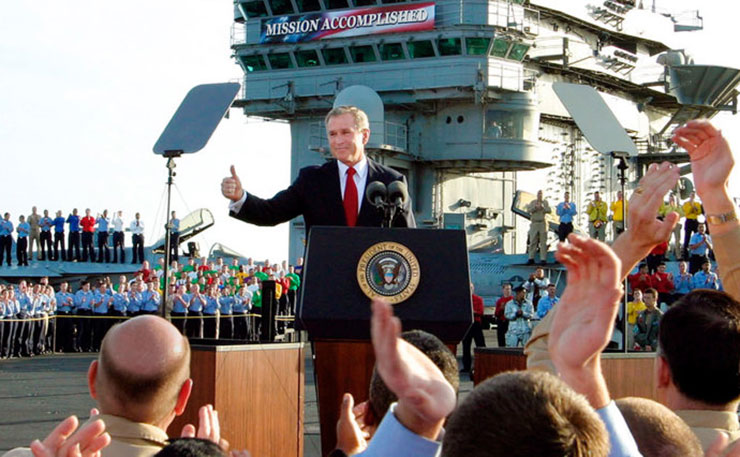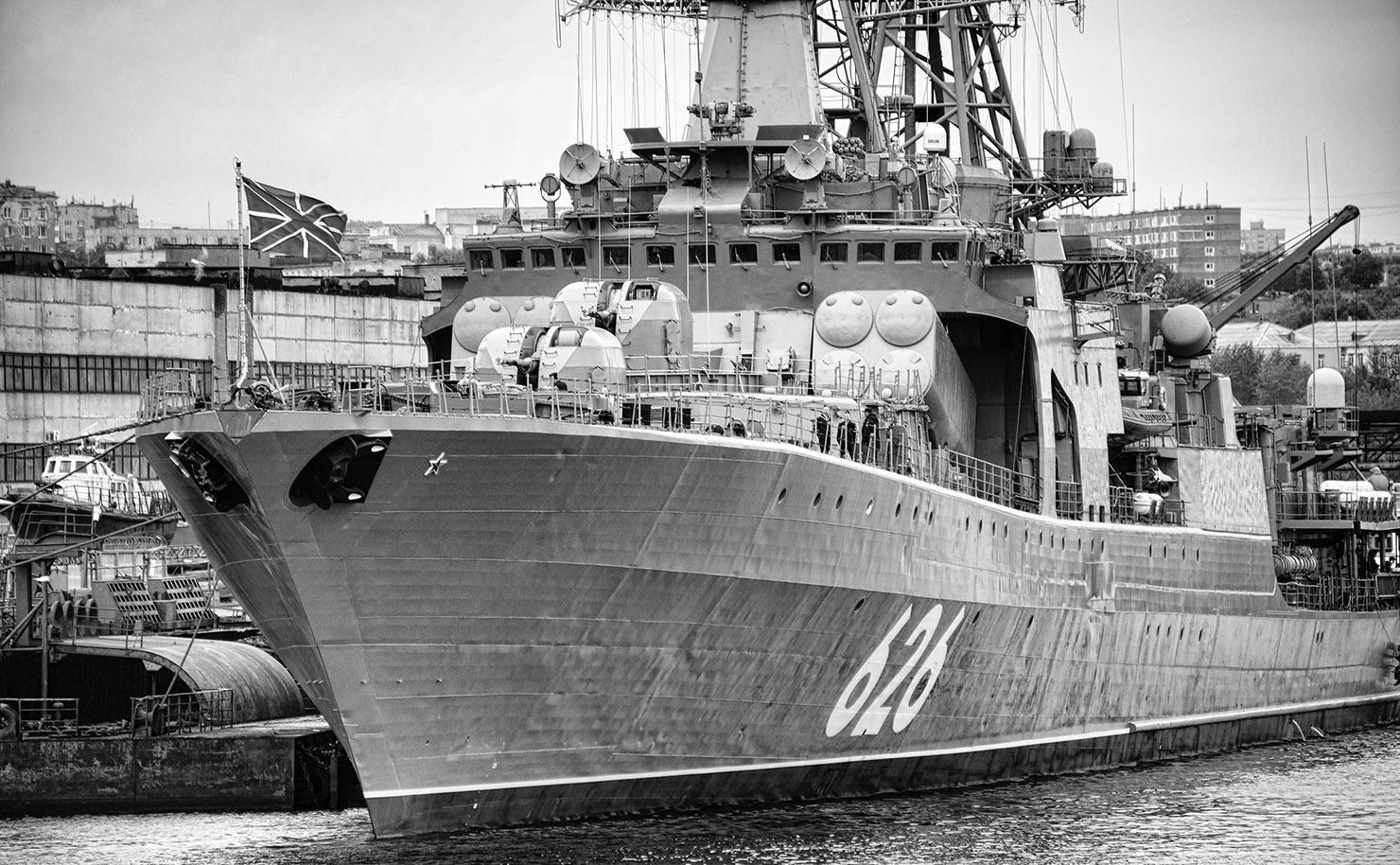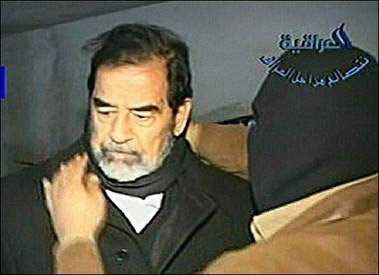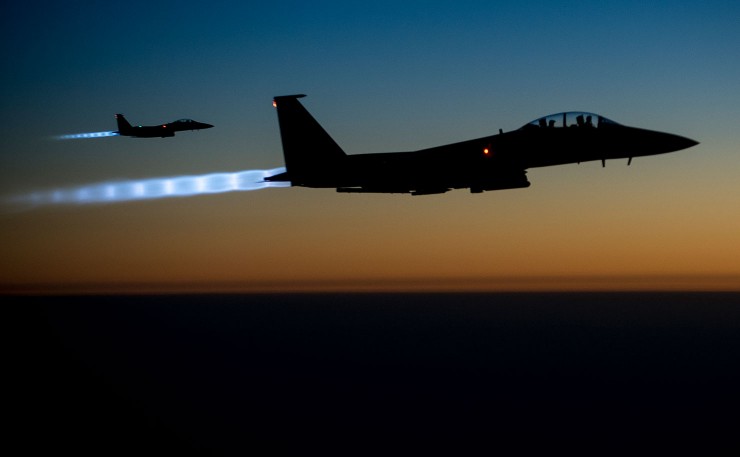To slaughter or not to slaughter, that is the question Australia should be asking, but isn’t. Mike Carey weighs in on the wars in the Middle East.
Russia’s intervention in Syria has laid bare what this war is all about: geopolitics, protecting respective allies in the region.
The US decision to drop weapons indiscriminately to anti-Assad forces, where ISIS is indistinguishable from and interchangeable with “moderate Sunni” rebels, confirms it and informs my serious misgivings about the billion dollar venture.
One of my gravest doubts concerns race not religion. Here we go again I thought, a new front in the war against the “hairy arsed sand n*ggers”. That’s what American soldiers called the Iraqis in 2004. Hairy arsed sand n*ggers formed part of the nomenclature of hate necessary to describe an enemy about which they knew very little.
The year before, in 2003, the US and its allies, including Australia, invaded Saddam Hussein’s Iraq as part the American neoconservative plan to re-shape the Middle East. It was called the “Project for the New American Century” (PNAC).
Iraq presented no real threat, or so said the United Nations’ weapons inspectors, but still it remained on the PNAC’s hit list for regime change, along with Libya, Syria and Iran.
To be effective, soldiers have to be taught to kill and they rely on an acceptable vocabulary to make that act less troubling to the soul. Is it easier to dispatch a hairy arsed sand n*gger? Are they less human? If that was a common pejorative applied to the enemy then what view did those soldiers have of African Americans back home?
Sure it’s only a bit of name calling in extremis, but it’s a symptom of a larger problem.

After Operation Desert Storm, to boot Saddam Hussein out of Kuwait in 1991, the US and its many allies (again including Australia) imposed no-fly zones in the Iraqi south and north to protect the Shia and the Kurds, and applied sanctions which soon crippled the economy.
As food and medicines became scarce, there was substantial collateral damage, an estimated death toll of around 500,000 Iraqi children. It was a point taken up with former US Secretary of State, Madeleine Albright by Lesley Stahl on US 60 Minutes in 1996.
“Lesley Stahl: We have heard that a half million children have died. I mean, that’s more children than died in Hiroshima. And, you know, is the price worth it?
Secretary of State, Madeleine Albright: “I think this is a very hard choice, but the price – we think the price is worth it.”
The price was right: imperial power is unconcerned about the death of half a million children as long as US strategic imperatives were met. Five hundred thousand sons and daughters of hairy arsed sand n*ggers don’t figure in that equation.
So what is the strategic imperative, and should we be part of the project? For most of the time since the Syrian civil war began in 2011, the US has been following the old Project for the New American Century script.
It has, along with Saudi Arabia, Qatar and the Gulf Cooperation Council states been funding and training the forces in opposition to President Bashar al Assad’s Syria.
NATO member Turkey has been bludgeoning Assad from the north with the parallel aim of destroying Kurdish power in northern Iraq and Syria. As each week passes, more reports of Turkey’s covert and overt support of ISIS surface.
The US and Israel have wanted to destroy the Shia crescent from Iran, through Iraq, Alawite Syria and on to Lebanon’s Hezbollah. The US has planned to provide Gulf oil and gas through Syria and Turkey to Europe, and dilute Russia’s strategic stranglehold on that market as a curb on Putin’s leverage.

If it can topple Assad, Syria’s port Tartus should become unavailable to Russian naval ships, a major blow to Moscow’s force projection.
Tartus is Russia’s only Mediterranean refuelling spot, sparing its warships the trip back to Black Sea ports through Turkey’s Dardanelles.
For oil rich, Wahhabi Saudi Arabia (a US ally), Alawite Assad and his elite group of “Islamic heretics” have always been in the cross hairs; Syria remains an ally of Iran, Riyadh’s regional rival.
For Israel (the US ally) – which has bombed Syria, provided air cover to the anti-Assad coalition and medical help to injured fighters – a radically re-structured Syria might even mean it doesn’t have to return the strategic Golan Heights, taken from Damascus in 1967.
Meanwhile, its sworn enemy, Lebanon’s Hezbollah is otherwise engaged in fighting for Syria and in grave danger of losing its supply lines to Iran.
This has always been the main game, not ISIS.
Wesley Clark, Supreme Allied Commander Europe of NATO (1997 to 2000) claims that former US Defence Secretary, Donald Rumsfeld issued a memo in 2001 proposing to take over seven countries in five years: Iraq, Syria, Lebanon, Libya, Somalia, Sudan, and Iran.
We have seen how disastrously that worked in Iraq, Somalia and Libya – no wonder the Syrians are resisting. The US needed to control these countries before the rise of the next superpower, and Israel relished a reduced threat from Iraq, Syria and Lebanon.
The US and the West claim they have the right to act and prevent the dictator, Assad preying on his own people. A few weeks ago, former Foreign Minister, Bob Carr even invoked that old bloodthirsty excuse, “Responsibility to Protect”, which is military action under the guise of humanitarian intervention.
Whenever you hear that phrase, run for the hills because the US is about to bomb somebody, somewhere. Until recently, our Foreign Minister, Julie Bishop and US Secretary of State, John Kerry have insisted Assad had to go; he has too much blood on his hands.
ABC News correspondent, Greg Jennett opined that, “Australia has always been convinced Bashar al Assad’s regime is evil, only now less evil than IS.”

Two decades ago we fought alongside Syria’s troops. In 1991, in Operation Desert Storm, to remove Saddam Hussein from Kuwait, the first President George Bush cleverly included Syrian forces in that coalition of the willing.
It didn’t concern George Bush or Australia then that Hafez al Assad (Bashar’s father) had slaughtered as many as 30,000 members of the Muslim Brotherhood in the Hama massacre just a decade earlier.
And don’t forget the blood on the hands of former Secretary of State, Madeleine Albright. 500,000 children, that’s a few Olympic-sized pools.
In fact, Desert Storm was probably the United States’ last successful campaign in the Middle East, unless of course, you relish this creative destruction.
So for the moment, we’re left with the bombing of Islamic State on behalf of Iraq or those who US Defence Secretary, Ashton Carter said have “no will to fight”, while covertly and overtly supporting forces opposed to those who do have the will to fight – Syria’s army.
All the while, hundreds of thousands of hairy arsed sand n*ggers from Libya through to Syria are forced to flee, a disaster presaged by Muammar Gaddafi before his death: “Now listen you, people of NATO. You’re bombing a wall which stood in the way of African migration to Europe, and in the way of Al-Qaeda terrorists. This wall was Libya. You‘re breaking it. You’re idiots, and you will burn in Hell for thousands of migrants from Africa and for supporting Al-Qaeda. It will be so. I never lie. And I do not lie now.”
Donate To New Matilda
New Matilda is a small, independent media outlet. We survive through reader contributions, and never losing a lawsuit. If you got something from this article, giving something back helps us to continue speaking truth to power. Every little bit counts.




